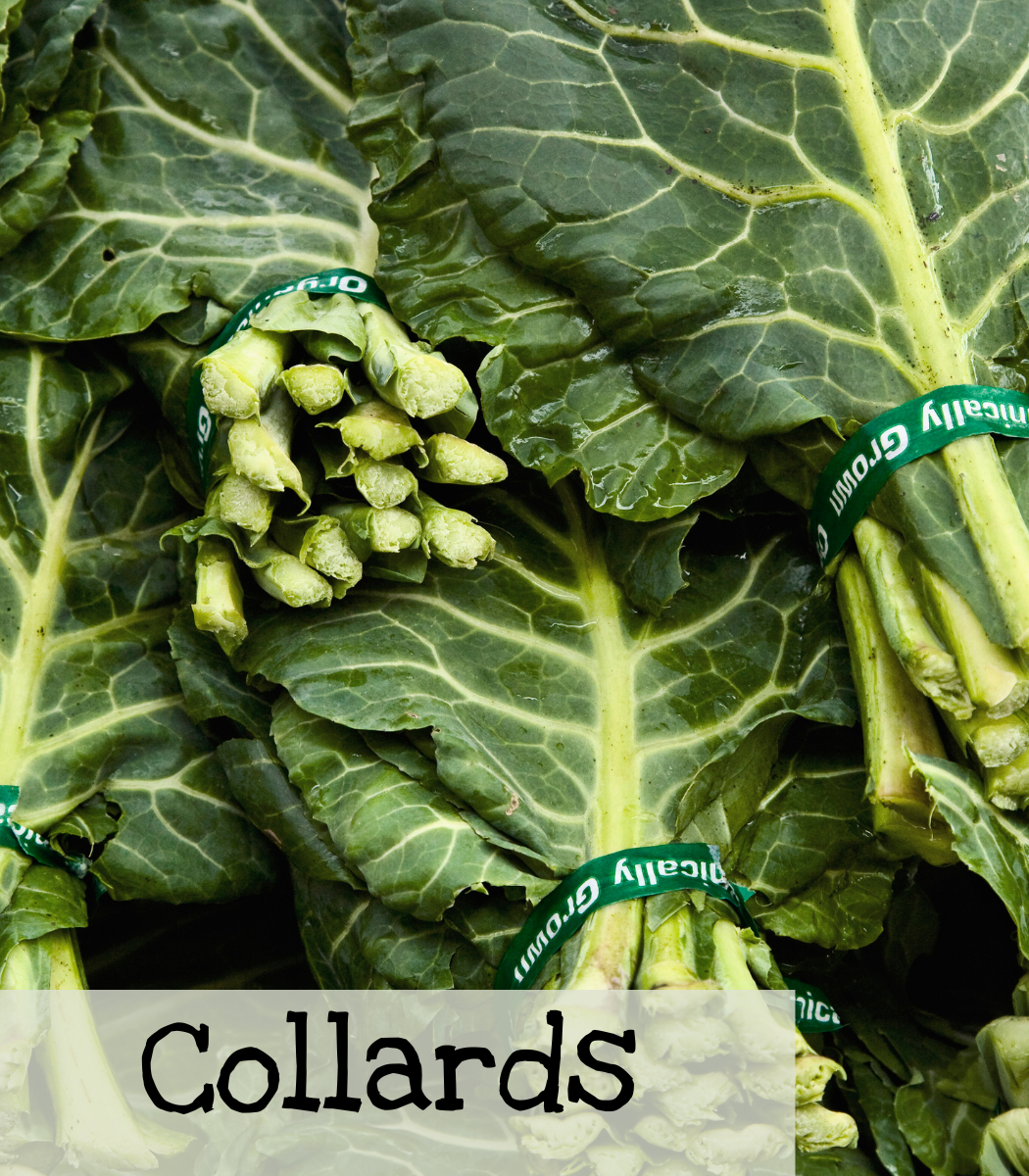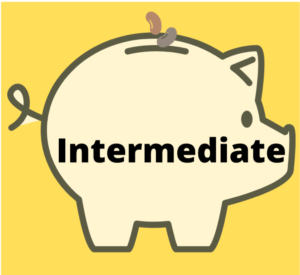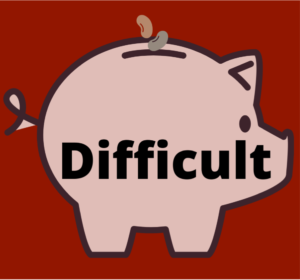
Collards
A classic southern vegetable, collards are used in a variety of dishes. Often sautéed with bacon, this brassica is also good mixed in with salads or cooked.
|
Georgia Southern |
|
Brassica oleracea |
| Can be used as a trap crop | |
|
Easy |
|
Intermediate to Difficult |
|
4-5 years if properly stored |
|
Biennial |
|
10-21 days |
|
None |
|
1/4 inch |
|
24”-36” |
|
Full sun |
|
65 days |
|
January, February, and August |
|
Yes |

Growing Tips

When to Start
Spring: Direct sow or start indoors 6-8 weeks before the last average frost date. Feb 1-Mar 15 (GA)
Transplant: Transplant 2 weeks before the last frost date. (End of March/Beginning of April for GA.)
Fall for winter harvest: Direct sow in late summer. (Aug 1-Sep 1 GA). Seeds can be started sooner indoors for transplants.
How to Start
Direct sow to a depth of 1/4 inch or transplant in full sun into moist, fertile soil. Plant the seeds in rows at least 3 feet apart, as collard greens will get large and need room to grow.
You can also start indoors 6-8 weeks before the last frost date and transplant seedlings 2 weeks before the last frost date.
Thin or space seedlings to 18 inches apart for adequate room in the rows. Thinned seedlings can be eaten. Collards will get better tasting after experiencing at touch of frost. Fall crops will often taste better, sweeter, than spring crops.
Care
Collards are frost tolerant. Frost actually improves the flavor of collard greens, so consider fall planting and winter harvests. However, they will need to be protected from hard freezes. Like most brassicas, they are heavy feeders. Provide rich soil or fertilize. A good rule of thumb is every 10 days. However, rain fall and existing soil nutrients will affect how often fertilizer is needed. Collards do not like heat and will bolt once temperatures get too warm.
Harvest
Harvest collard greens in spring before bolting can occur. Individual leaves can be cut for a continual harvest or the whole plant can be harvested. The leaves can be picked at any time they are of edible size from the bottom of the large, inedible stalks. Leaves have a short shelf life and become bitter the longer they have been stored. Use harvested leaves within a few days.
Trap Cropping
To use collards as a trap crop, start indoors earlier than listed above. Start soon enough so that the plant is blooming/maturing at the time the pests you are trying to contain arrive. Or if collards are the crop you wish to harvest there are other plants that can be used to protect collards from pests. For more information on the methods of trap cropping or what plants to use to protect collards, see “Trap Cropping”, the link is below.
Seed Saving


Isolation Distance
Collards are biennial and wind-pollinated. They will cross with other Brassica oleracea, like kale and kohlrabi. Separate by 1 mile for reliable distance isolation.
Instructions
Allow seeds to mature and dry on the plants before harvesting. Store them in a dry place and wait until they are thoroughly dry.
Seeds and finer chaff are easy to separate by a variety of methods. One way is to use two screens of varying mesh, one a little smaller than the seeds and the other a little larger. The first screen lets anything smaller than the seeds fall through, and the second lets the seeds through and stops anything larger.
Features
- Georgia Southern: Slow bolting. Withstands light freezes, which only make the collards sweeter.

- Be aware, sometimes collards can bolt with immature flowers (possibly not seed-producing) if planted at the wrong time.
- If planting in the Fall, harvest after a light frost. Collards are the most flavorful and tender after a frost.
- Harvest leaves before they are 12” long. Older leaves are tough and stringy.
- The taste of collards is sweetened and enhanced by frosts and cold temperatures.
You May Also Like:
Companion Planting: How to use flowers to help control pests.
Trap cropping: How to keep pests out of your main crop.
